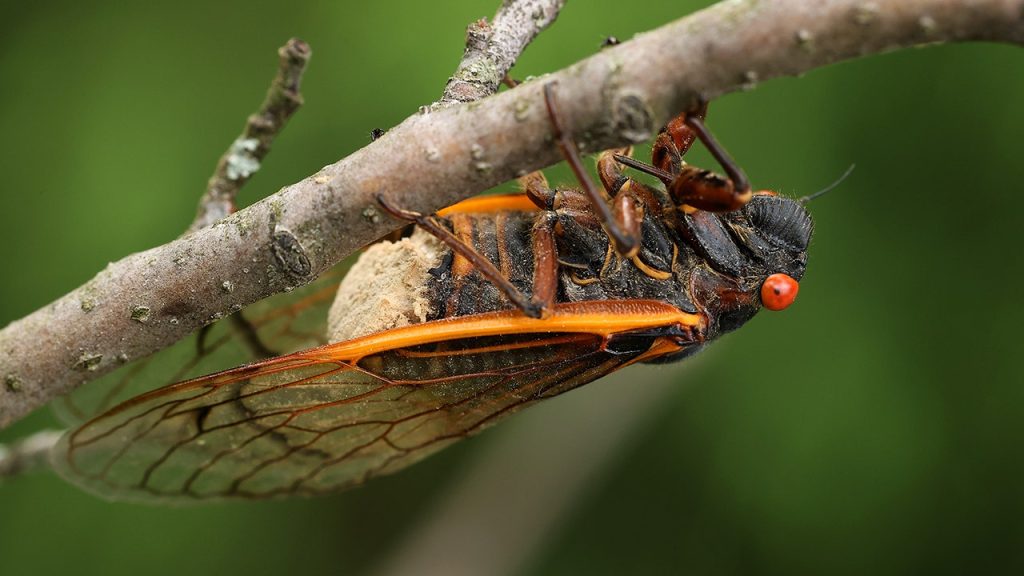This year, two “broods” of cicadas are emerging simultaneously, with reports of a mysterious fungus causing cicadas to display abnormal sexual behaviors and become “zombies.” The fungus, Massospora cicadina, infects cicadas and turns the back part of their bodies into spores, which can get ripped open during mating, allowing the fungus to spread. Experts like P.J. Liesch from the University of Wisconsin-Madison have explained that the fungus alters the behavior of infected cicadas, making them exhibit unusual mating behavior. Despite the term “zombie” cicadas, they are still very much alive.
While the altered behavior of infected cicadas may be alarming, experts assure that there is no need to fear these insects. The fungus is naturally occurring in the environment and is specialized to cicadas, meaning it cannot infect other animals or humans. While some call infected cicadas “flying salt shakers of death,” the Field Museum and Liesch emphasize that they are harmless. Infected cicadas can be handled safely, though washing hands afterward is advisable. The number of infected cicadas remains relatively small, with only a few cases found among hundreds observed in areas like central Illinois and Lake Geneva, Wisconsin.
The emergence of the periodical cicadas is considered special and important for the ecosystem. These insects play a crucial role in the food chain, providing a free buffet for birds, fish, and mammals during their active period. While cicadas may be seen as a nuisance, Liesch highlights their significance and the rare opportunity to witness their emergence every 17 years. The cicadas’ emergence is compared to a solar eclipse in terms of its rarity and significance, giving scientists like Liesch a unique chance to study these insects and their behavior.
Despite the sensationalist headlines and references to “Dawn of the Dead: Cicadas,” the overall message from experts is one of reassurance. The behavior of infected cicadas may be bizarre, with males mimicking females to attract mates, but the fungus does not pose any threat to humans. The frenzy of mating activity among infected cicadas is a natural occurrence that has fascinated scientists like Liesch and provides a unique opportunity to study these insects. The emergence of the periodical cicadas in Wisconsin is a special event that offers insights into their biology and ecology, emphasizing their importance in the ecosystem. So, for those concerned about a potential cicada apocalypse, it seems that the reality is far less dramatic.


